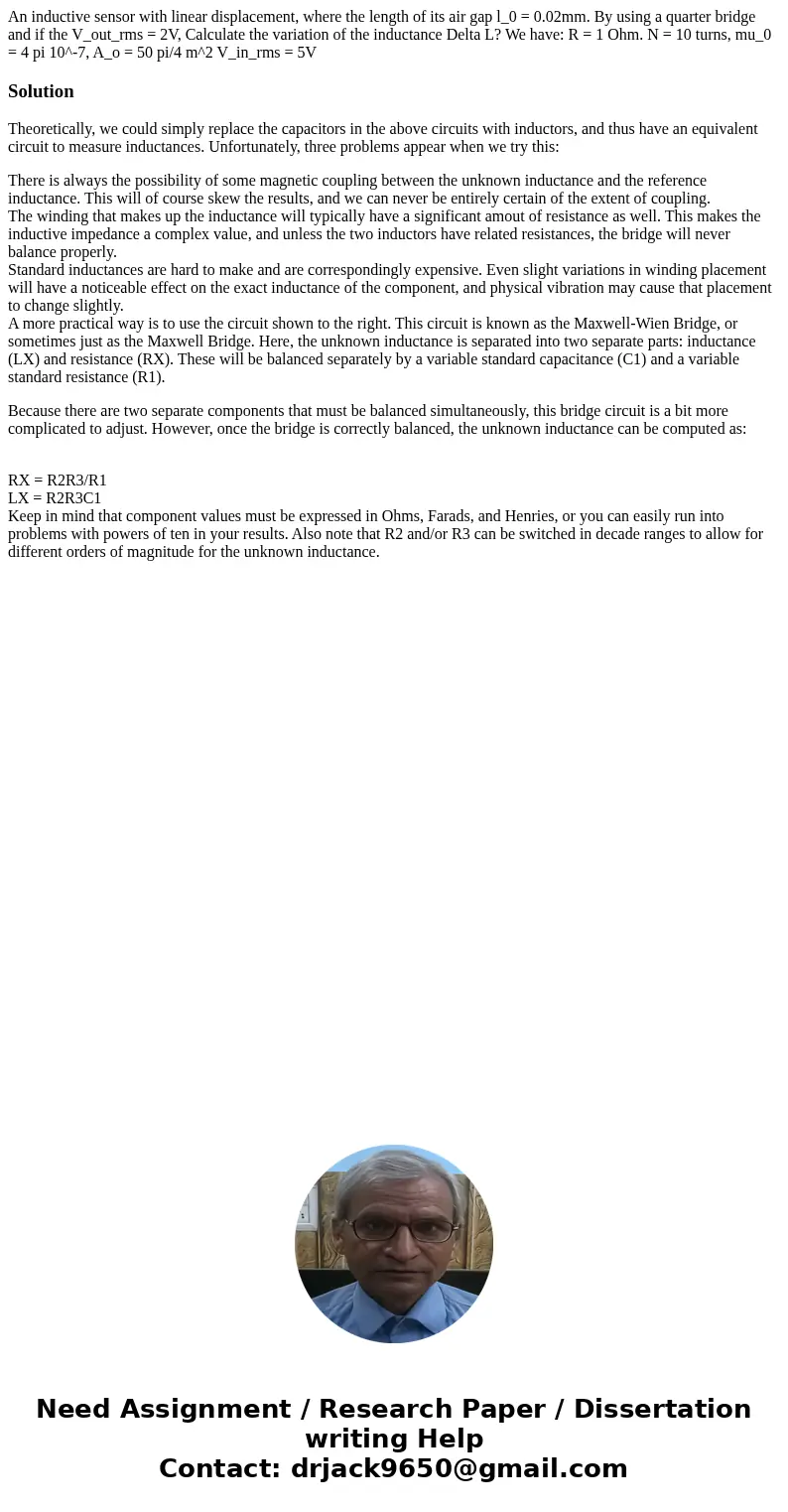An inductive sensor with linear displacement where the lengt
Solution
Theoretically, we could simply replace the capacitors in the above circuits with inductors, and thus have an equivalent circuit to measure inductances. Unfortunately, three problems appear when we try this:
There is always the possibility of some magnetic coupling between the unknown inductance and the reference inductance. This will of course skew the results, and we can never be entirely certain of the extent of coupling.
The winding that makes up the inductance will typically have a significant amout of resistance as well. This makes the inductive impedance a complex value, and unless the two inductors have related resistances, the bridge will never balance properly.
Standard inductances are hard to make and are correspondingly expensive. Even slight variations in winding placement will have a noticeable effect on the exact inductance of the component, and physical vibration may cause that placement to change slightly.
A more practical way is to use the circuit shown to the right. This circuit is known as the Maxwell-Wien Bridge, or sometimes just as the Maxwell Bridge. Here, the unknown inductance is separated into two separate parts: inductance (LX) and resistance (RX). These will be balanced separately by a variable standard capacitance (C1) and a variable standard resistance (R1).
Because there are two separate components that must be balanced simultaneously, this bridge circuit is a bit more complicated to adjust. However, once the bridge is correctly balanced, the unknown inductance can be computed as:
RX = R2R3/R1
LX = R2R3C1
Keep in mind that component values must be expressed in Ohms, Farads, and Henries, or you can easily run into problems with powers of ten in your results. Also note that R2 and/or R3 can be switched in decade ranges to allow for different orders of magnitude for the unknown inductance.

 Homework Sourse
Homework Sourse